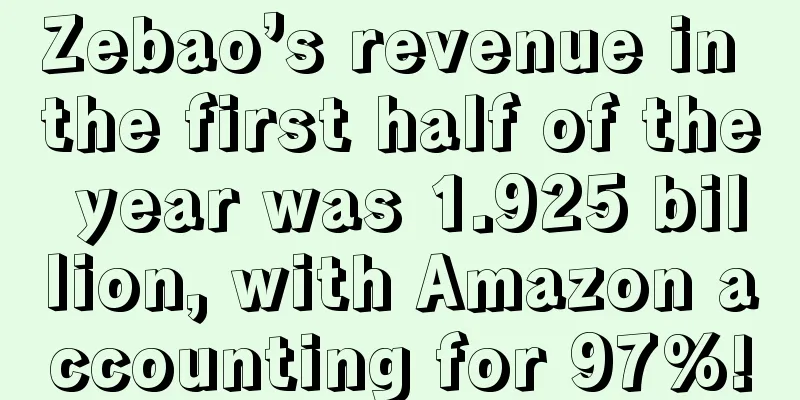Americans are starting a "substitution trend" and e-commerce platforms are flooded with counterfeit goods

|
According to Reuters, American consumers' demand for brand substitutes is growing, especially among young consumers, and the spread of social media such as TikTok has accelerated this trend. During this year's holiday shopping season, many consumers plan to buy brand substitutes as gifts.
At the same time, on TikTok, the popularity of the label for brand substitutes continues to rise, even bringing some substitute brands into the spotlight. On e-commerce platforms such as Amazon and eBay, substitutes are constantly emerging, and many products even directly state that they are substitutes for a certain brand in the listing description.
The rise of "substitute" shopping trend to grab the shopping share during the peak season
On TikTok, brand substitutes have been viewed millions of times, such as Deckers’ “Ugg equivalent boots,” which sell for $29.99, while the original Ugg boots sell for $115. In addition, influencers promoting brand substitutes are emerging.
For example, Lauren Maginness, a loyal fan of Lululemon, learned about CRZ from an influencer on TikTok. The brand mainly sells yoga clothes similar to Lululemon styles but at lower prices. Maginness mainly purchases CRZ brand products through Amazon. One of the brand's high-waisted yoga pants is quite similar to Lululemon's Align leggings, but the price is only $32, while the latter is priced at $98.
According to JungleScout, CRZYoga's products are selling like hot cakes on Amazon, with an average of 88,633 pairs of leggings sold each month and average monthly revenue of approximately $2.84 million .
Not only that, the sales of brand substitutes are continuing to rise, and CRZYoga is just one of many substitute brands. More importantly, many consumers also plan to buy substitutes in the upcoming shopping season. According to a survey of 3,429 people conducted by Circana, 28% of American consumers said they plan to give beauty products such as perfume as holiday gifts, and 55% of consumers plan to give clothing, shoes or accessories.
Therefore, in this holiday season, brand-name perfumes, cosmetics, and mid-range clothing and footwear are the brands most vulnerable to market share erosion by substitute products. Some brands seem to have also felt the crisis. For example, in May this year, Lululemon launched a two-day "dupeswap" promotion, allowing buyers to exchange similar products for Align leggings. It is hard to prevent a large number of counterfeit products from flooding into e-commerce platforms
In the current environment of high inflation, consumers are increasingly accepting of substitute and counterfeit goods. In fact, the trend of substitute consumption can be traced back to the rise of fast fashion. Zara, founded in 1975, initially copied luxury designs at a lower price so that ordinary consumers could also buy them.
Later, the emergence of platforms such as Amazon, eBay, Shopify and Etsy made it easier for consumers to find brand substitutes or knockoffs. More recently, new technologies such as Google Lens allow consumers to search for similar products through pictures, further accelerating the sale of counterfeit goods.
In addition, the emergence of Alibaba International Station has made it easier for merchants to produce and purchase brand counterfeit and substitute goods, and even use the same materials and fabrics as big brands. Some counterfeit merchants use cheaper materials to produce brand-name products and then sell them as genuine products.
On Amazon, some sellers use brand names directly in their listing descriptions, and add words such as "dupe," "fake," or "faux" in front of them. Although Amazon's platform policy has strict regulations on this, new similar products will appear soon after a product is removed from the shelves. In addition, sellers are becoming more and more aware of how to avoid infringement when selling counterfeit goods.
In fact, consumers still have certain expectations when buying counterfeit or substitute goods. A survey of 3,000 millennials and Generation Z consumers in the United States, the United Kingdom and Italy by Trustpilot showed that 30% to 49% of consumers were not satisfied with counterfeit goods purchased online.
With consumer purchasing power limited, the demand for substitutes and counterfeit goods has increased, reflecting consumers' desire for goods that are both affordable and of good quality. For sellers, this may hide new business opportunities.
Editor✎ Ashley/ Disclaimer: This article is copyrighted and may not be reproduced without permission. |
<<: Q3 U.S. e-commerce sales reached $284.1 billion, continuing its growth momentum
>>: U.S. toy shopping trends for the 2023 holiday season
Recommend
What is Amazon Storefronts? Amazon Storefronts Review
Amazon launches new retail centers called Amazon S...
What is J&T Express? J&T Express Review
J&T Express is a technology-innovative Interne...
I escaped from the milk tea franchise trap and turned to Amazon
Preface of the Little Clone: It’s time for our we...
Amazon is about to restrict this feature...
In the coming February, in addition to the people...
A large number of sellers' links have become fake! Can the generic word "one" also be registered as a trademark?
At the beginning of the new year, while looking ba...
All the major shipping companies have announced their September freight rates...
Shipping prices have been on a surge in recent mon...
Amazon Prime Day is coming, how to optimize FBA fees? You need to do this!
Amazon FBA is the first stop for most sellers to e...
What is CTR (Click-through Rate)? CTR (Click-through Rate) Measurement
CTR stands for Click-Through-Rate, which is click-...
6 Internet celebrity marketing platforms! A must-have for cross-border sellers!
Influencer marketing is one of the off-site market...
Amazon Inventory Performance Changes! Are Inventory Limits Eased?
Yesterday, Amazon Japan announced that starting fr...
Working for free during the Spring Festival, basic wages forced to drop, a large number of sellers spend the New Year with "nothings"
The countdown to the 2023 Spring Festival has begu...
U.S. Justice Department approves antitrust bill targeting Amazon, Google, Apple
It is learned that the U.S. Department of Justice ...
Amazon directly affects the ranking of factors integration, these ten points are the most important
The ranking of products on Amazon affects exposur...
What is the U.S. Consumer Product Safety Commission (CPSC)? U.S. Consumer Product Safety Commission (CPSC) Reviews
The U.S. Consumer Product Safety Commission (CPSC)...
What is Seller Growth Academy? Seller Growth Academy Review
Seller Growth Academy is an educational platform u...









